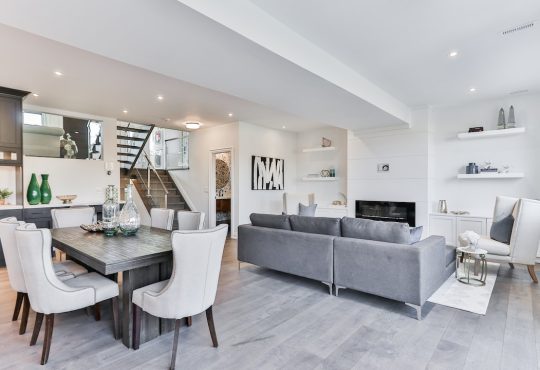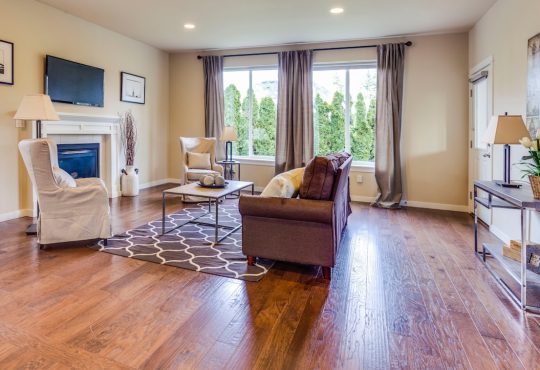
Enhancing Interiors: The Significance of Rugs in Defining Spaces with Color and Texture
Introduction: The Importance of Rugs in Interior Design
Rugs play a crucial role in interior design, as they have the power to transform a space and tie together all the elements of a room. They not only add warmth and comfort to a space but also define and anchor different areas within a room. Choosing the right rug for your space is essential, as it can make or break the overall design aesthetic. With so many options available, it’s important to consider factors such as color, texture, size, and material when selecting a rug.
How Rugs Define Spaces
One of the key functions of rugs in interior design is their ability to define and anchor different areas within a room. By placing a rug under a seating arrangement or dining table, you can create a designated space for that particular area. This not only helps to visually separate different areas but also adds a sense of structure and organization to the room.
For example, in an open-concept living and dining area, you can use a large rug to define the living space and another rug to anchor the dining area. This creates distinct zones within the room while maintaining a cohesive design. Additionally, rugs can be used to create pathways or guide the flow of traffic within a space.
The Role of Color in Rug Selection
Color is an important consideration when selecting a rug, as it can greatly impact the mood and feel of a room. Bright and bold colors can add energy and vibrancy to a space, while neutral tones can create a calming and serene atmosphere. It’s important to choose a color that complements the existing color scheme of your room.
If you have a neutral-colored room, you can use a rug with bold colors or patterns to add visual interest and make a statement. On the other hand, if your room already has vibrant colors or patterns, it’s best to opt for a more subdued rug that will complement rather than compete with the existing design elements.
The Impact of Texture on Rug Selection
Texture is another important factor to consider when selecting a rug, as it can add depth and interest to a room. Different textures can create different moods and evoke different emotions. For example, a shaggy rug can add a cozy and inviting feel to a space, while a flatweave rug can create a more sleek and modern look.
When choosing a rug texture, it’s important to consider the overall design aesthetic of your room. If you have a room with a lot of soft and plush textures, you may want to opt for a rug with a smoother texture to create contrast. Conversely, if your room has a lot of hard and smooth surfaces, a rug with a more textured surface can add warmth and visual interest.
Choosing the Right Size Rug for Your Space
Selecting the right size rug for your space is crucial in order to achieve a balanced and proportionate look. A rug that is too small can make a room feel disjointed and incomplete, while a rug that is too large can overwhelm the space.
When determining the size of your rug, consider the dimensions of your room as well as the furniture layout. In a living room, for example, you want to make sure that the front legs of all the furniture pieces are on the rug. This helps to anchor the furniture and create a cohesive look. In a dining room, the rug should be large enough to accommodate both the table and chairs, allowing for easy movement.
The Benefits of Layering Rugs
Layering rugs is a popular trend in interior design as it adds dimension and interest to a room. It allows you to mix and match different patterns, colors, and textures to create a unique and personalized look.
When layering rugs, it’s important to consider the size and placement of each rug. Start with a larger rug as the base and layer a smaller rug on top. The bottom rug should be neutral or have a subtle pattern, while the top rug can have a bolder pattern or color. This creates a visually appealing contrast and adds depth to the space.
Rug Materials: Which One is Right for You?
There are various rug materials available, each with its own pros and cons. The material you choose will depend on factors such as durability, comfort, and maintenance.
Wool is a popular choice for rugs as it is durable, soft, and naturally stain-resistant. It also has excellent insulating properties, making it ideal for colder climates. However, wool rugs can be more expensive compared to other materials.
Cotton rugs are another popular option as they are affordable, easy to clean, and come in a wide range of colors and patterns. However, they may not be as durable as wool rugs and may require more frequent cleaning.
Synthetic materials such as nylon and polyester are also commonly used for rugs. They are affordable, easy to clean, and resistant to stains and fading. However, they may not have the same luxurious feel as natural materials.
Maintaining the Beauty of Your Rugs
Proper cleaning and maintenance are essential to keep your rugs looking their best and extend their lifespan. Regular vacuuming is important to remove dirt and debris from the surface of the rug. It’s also important to address spills and stains immediately to prevent them from setting in.
Depending on the material of your rug, you may need to use specific cleaning methods or hire professional cleaners. For example, wool rugs may require professional cleaning to maintain their quality and appearance.
In addition to regular cleaning, it’s important to rotate your rugs periodically to ensure even wear. This helps to prevent certain areas of the rug from becoming more worn out than others.
Rug Placement: Tips and Tricks
Proper rug placement is crucial in order to create a cohesive and visually appealing design. Here are some tips and tricks to help you with rug placement:
– In a living room, place the front legs of all the furniture pieces on the rug to anchor the space. If you have a larger room, you can place all the furniture on the rug.
– In a dining room, make sure the rug is large enough to accommodate both the table and chairs. This allows for easy movement and prevents chairs from catching on the edge of the rug.
– In a bedroom, place a large rug under the bed, extending it beyond the sides and foot of the bed. This creates a soft and comfortable surface to step onto when getting out of bed.
– In a hallway or entryway, use a runner rug to create a visual pathway and guide the flow of traffic.
Conclusion: Enhancing Your Interiors with Beautiful Rugs
In conclusion, rugs play a vital role in interior design by adding warmth, comfort, and style to a space. They define and anchor different areas within a room, create visual interest through color and texture, and tie together all the elements of a design. By carefully selecting the right rug for your space and considering factors such as color, texture, size, and material, you can enhance the overall aesthetic of your interiors. With proper cleaning and maintenance, your rugs will continue to bring beauty and functionality to your space for years to come.
If you’re looking to create a unique first impression in your home, personalizing your hallway and staircase is key. One way to do this is by adding rugs that define the space with color and texture. In fact, a recent article on Agutonsky.com explores the importance of rugs in interior design and how they can transform any area of your home. Check out the article here to discover more about the role of rugs in defining spaces.



